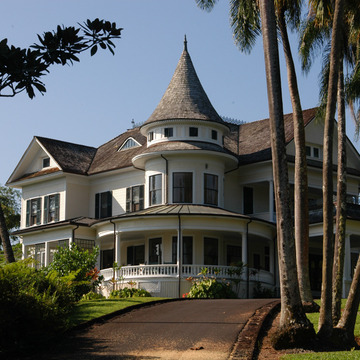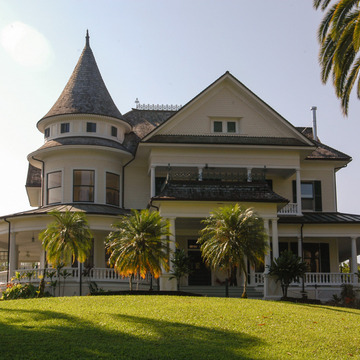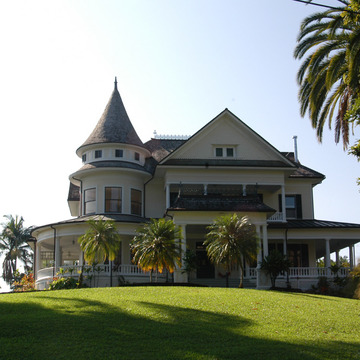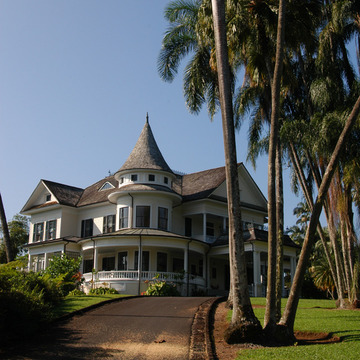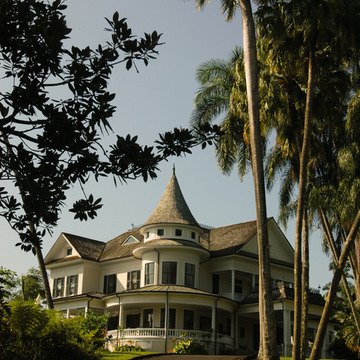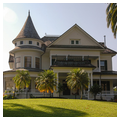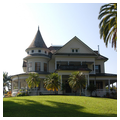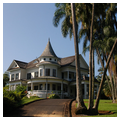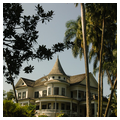One of the last Queen Anne–style houses remaining in Hawaii, the two-story Ship-man residence sits on the peak of a hillside lot on Reed's Island. With its corner turret, wraparound lanai, porte-cochere, and gable-roofed second-story balcony, it is a grand and elegant house. Turned balustrades, Doric columns, stained glass windows, and the curved double-hung windows in the living room and the parlor further contribute to the house's air of dignity. The windows ascend into the wall, allowing direct access to the lanai. The fish-scale-shingled gables and clapboard siding typify the time, as do the linen walls of the interior rooms. The house was built for Hilo businessman J. R. Wilson, and was the first to be erected on Reed's Island. In 1900 it was sold to cattle rancher W. H. Shipman. The house remains with the Shipman descendents and now operates as a bed-and-breakfast.
You are here
W. H. Shipman House
If SAH Archipedia has been useful to you, please consider supporting it.
SAH Archipedia tells the story of the United States through its buildings, landscapes, and cities. This freely available resource empowers the public with authoritative knowledge that deepens their understanding and appreciation of the built environment. But the Society of Architectural Historians, which created SAH Archipedia with University of Virginia Press, needs your support to maintain the high-caliber research, writing, photography, cartography, editing, design, and programming that make SAH Archipedia a trusted online resource available to all who value the history of place, heritage tourism, and learning.















